Off-the-Beaten-Path Villages in Southern France

Off-the-Beaten-Path Villages in Southern France
Southern France conjures images of lavender fields, azure coastlines, and sun-drenched vineyards. While iconic destinations like Nice, Cannes, and Aix-en-Provence draw millions of visitors annually, the real soul of this enchanting region often resides in its lesser-known villages. Tucked into hillsides, perched atop cliffs, or nestled in verdant valleys, these hidden gems offer authentic French experiences without the crowds. This guide will introduce you to the most charming under-the-radar villages in Southern France that preserve the region's timeless beauty, distinctive architecture, and genuine way of life.
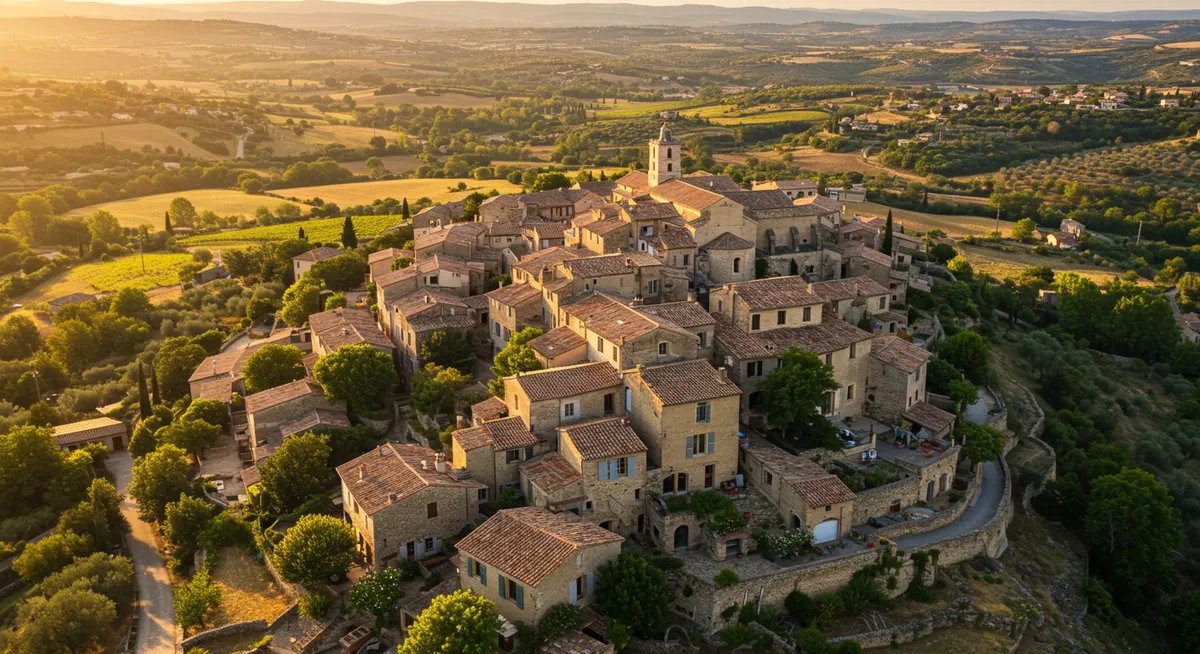
1. Gordes: The Quintessential Provençal Village
While not entirely unknown, Gordes remains far less visited than the renowned villages of the French Riviera. Dramatically perched on the southern edge of the Plateau de Vaucluse, this stone village rises in tiers of honey-colored buildings crowned by a Renaissance castle. Recognized as one of France's "Most Beautiful Villages," Gordes exemplifies the timeless beauty of Provençal architecture set against the backdrop of olive groves and lavender fields.
What Makes It Special
- Spectacular Setting: Built on a promontory with panoramic views of the Luberon valley and mountains
- Ancient Stone Architecture: Uniformly constructed of local limestone that glows golden in the evening light
- Artistic Heritage: Attracted numerous artists including Marc Chagall and Victor Vasarely
- Nearby Abbey: The 12th-century Sénanque Abbey surrounded by lavender fields is one of Provence's most iconic sights
Local Experiences
Wander the labyrinthine streets lined with ancient houses, enjoying the interplay of light and shadow on the stone facades. Visit the weekly market (Tuesday mornings) to sample local products including olive oil, honey, and lavender products. Explore the Village des Bories, a nearby open-air museum featuring prehistoric dry-stone huts. Photography enthusiasts should arrive at sunrise or sunset when the village stone takes on a magical golden glow.
Getting There
Gordes is located in Provence's Luberon region, about 38 km (24 miles) east of Avignon. It's best reached by car, as public transportation options are limited. The village center is pedestrianized, with parking available at the edge of town (paid during high season).
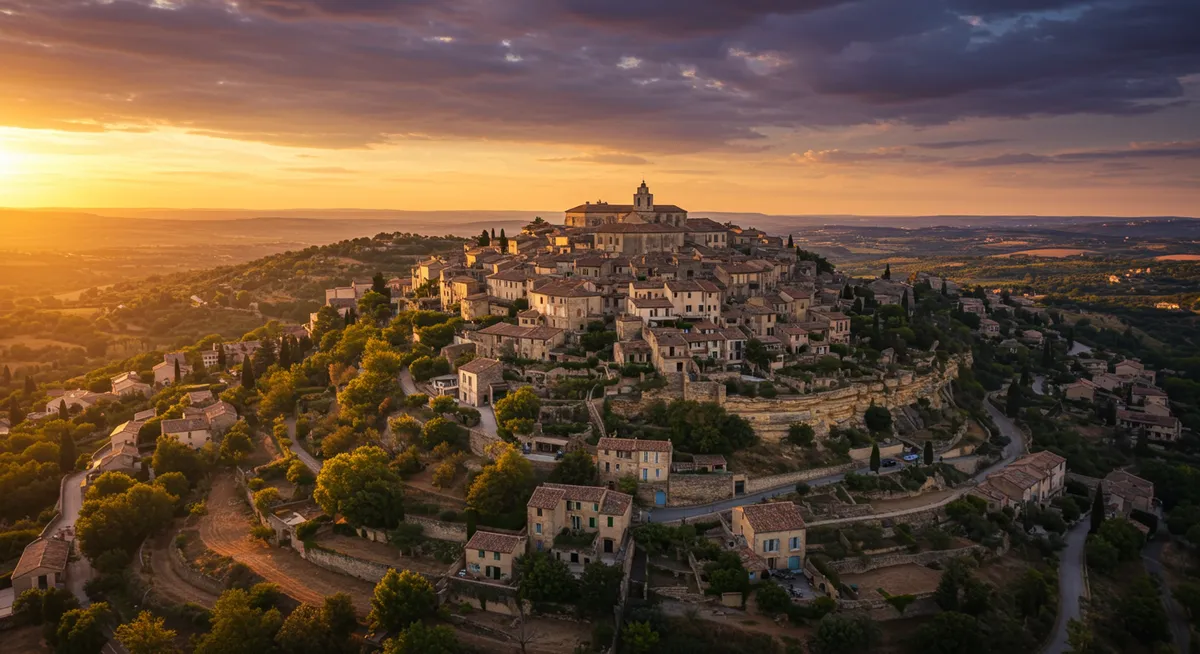
2. Moustiers-Sainte-Marie: Porcelain Perfection
Dramatically situated between two rocky cliffs, Moustiers-Sainte-Marie is arguably one of France's most spectacularly located villages. A gleaming star suspended on a chain between the cliffs has hung above the village for centuries, adding to its mystical appeal. Known for its distinctive faience pottery tradition dating back to the 17th century, this village offers visitors a blend of natural beauty, artistic heritage, and medieval charm at the gateway to the breathtaking Gorges du Verdon.
What Makes It Special
- Dramatic Setting: Nestled between two limestone cliffs with a mountain stream cascading through the center
- Legendary Star: A 16th-century golden star hanging on a chain 227 meters above the village
- Faience Pottery: A centuries-old tradition of distinctive blue and white ceramics
- Gateway to Verdon: Located at the entrance to Europe's deepest and most beautiful gorge
Local Experiences
Visit the Musée de la Faïence to learn about the village's pottery heritage, which was revived in the 20th century after nearly disappearing. Hike the short but steep trail to Notre-Dame de Beauvoir chapel, perched on the cliff above the village, for spectacular views. Shop for authentic, locally-made faience pottery in the village workshops—each artisan has their own distinctive style. Dine on rustic Provençal cuisine featuring local truffles, olive oil, and mountain herbs.
Getting There
Moustiers-Sainte-Marie is located in the Alpes-de-Haute-Provence region, about 90 km (56 miles) northeast of Aix-en-Provence. It's best reached by car, especially when combined with a trip to the Gorges du Verdon. The village is small and easily explored on foot, though it involves some climbing on steep streets.

3. Collonges-la-Rouge: The Ruby of the Dordogne
True to its name, Collonges-la-Rouge stands as a striking anomaly in the French countryside—an entire village built of deep red sandstone that glows crimson in the sunlight. Founded in the 8th century, this medieval village in the Corrèze department features a remarkable collection of Renaissance mansions, towers, and turrets that seem plucked from a fairy tale. As the founding village of the "Most Beautiful Villages in France" association, Collonges sets the standard for preserving authentic rural French heritage.
What Makes It Special
- Distinctive Red Architecture: The entire village is constructed from local iron-rich sandstone
- Medieval Preservation: Over 25 protected historic buildings concentrated in a tiny village center
- Architectural Diversity: Noble houses with turrets alongside humble farmers' dwellings
- Historic Significance: Birthplace of the "Most Beautiful Villages in France" movement in 1982
Local Experiences
Stroll the car-free lanes to discover architectural details like sculpted doorways, coats of arms, and intricate stonework spanning from the Middle Ages through the Renaissance. Visit the Maison de la Sirène (Mermaid House) featuring an unusual carved mermaid above its entrance. Shop for local crafts including pottery, leather goods, and regional specialties from artisans working in traditional buildings. Sample Limousin culinary specialties including duck confit, black cherry clafoutis, and walnut-based dishes.
Getting There
Collonges-la-Rouge is located in southwestern France, about 170 km (105 miles) northeast of Bordeaux. It's best reached by car, as public transportation options are extremely limited. The village is small enough to explore entirely on foot in a few hours.
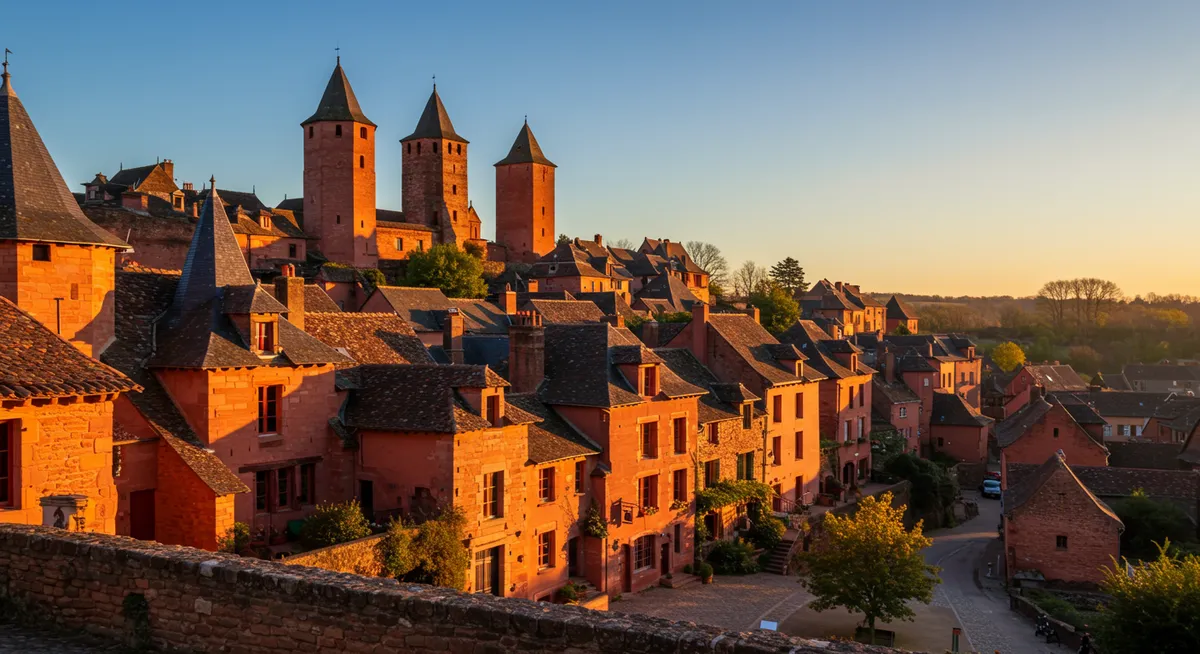
4. Eze: Eagle's Nest of the Riviera
Perched like an eagle's nest at 429 meters above the Mediterranean Sea, Eze offers some of the most breathtaking views along the Côte d'Azur. While the French Riviera is known for glamorous beach resorts, this medieval village provides a striking contrast with its narrow cobblestone streets, ancient stone houses, and spectacular panoramas. Despite being relatively close to Nice and Monaco, Eze retains an authentic character and becomes wonderfully peaceful in the evening after day-trippers depart.
What Makes It Special
- Spectacular Location: Perched on a narrow rocky peak with 360-degree views of the Mediterranean
- Exotic Gardens: The Jardin Exotique features cacti and succulents amid ancient ruins at the village summit
- Perfume Heritage: Home to the historic Fragonard and Galimard perfume factories
- Ancient Stone Labyrinth: A perfectly preserved medieval village core with buildings dating to the 1300s
Local Experiences
Climb to the Jardin Exotique at the village's highest point for unparalleled views stretching from Italy to Saint-Tropez. Visit one of the historic perfumeries to learn about traditional French perfume-making and create your own custom scent. Hike the Nietzsche Path, named for the philosopher who found inspiration here, connecting the village to Eze-sur-Mer 400 meters below. Stay overnight to experience the village's magical ambiance after the daytime crowds have departed.
Getting There
Eze is located between Nice and Monaco, about 12 km (7.5 miles) from Nice. Unlike many hidden villages, it's accessible by public transport—bus #82 from Nice or train to Eze-sur-Mer followed by the hiking trail or bus up to the village. The medieval village is entirely pedestrianized, with parking at the village entrance.
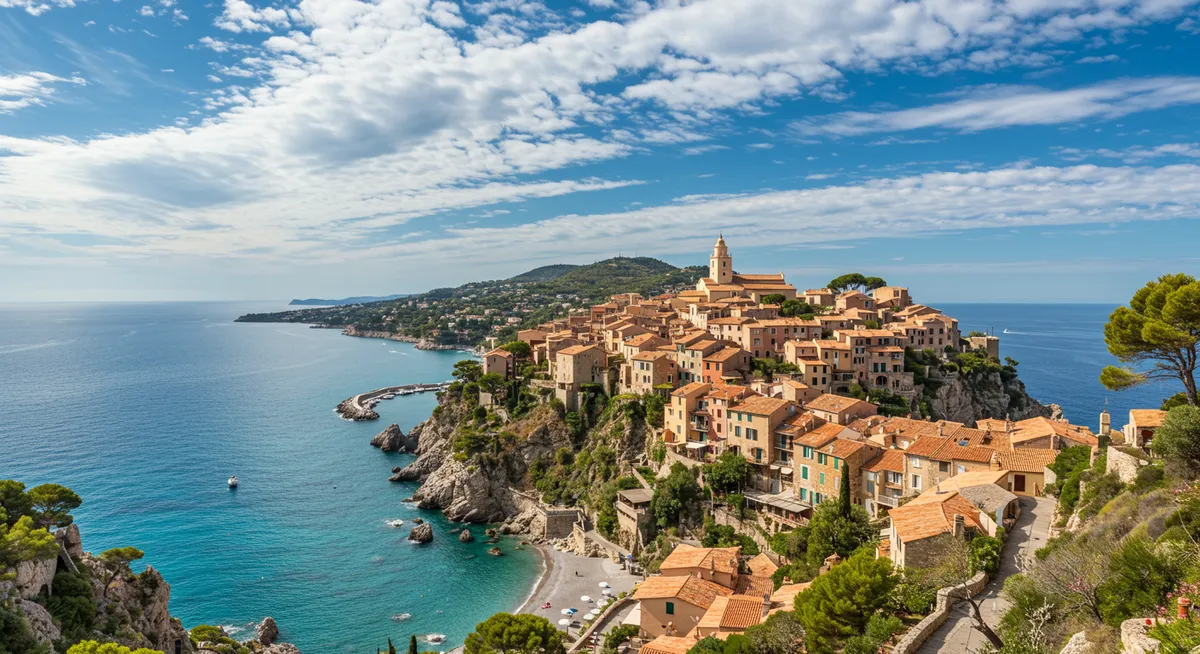
5. Roussillon: The Ochre Village
Like an artist's palette come to life, Roussillon stands as one of the most colorful villages in France. Built atop one of the world's largest ochre deposits, this Luberon village features buildings in a stunning spectrum of yellow, orange, and red hues. The vibrant facades, set against the lush green of pine trees and the deep blue Provençal sky, create a visual feast that has attracted artists for generations. Beyond its color, Roussillon offers a perfect blend of natural beauty, artistic heritage, and authentic village life.
What Makes It Special
- Ochre Cliffs: Surrounded by dramatic multicolored cliffs created by ancient ochre deposits
- Vibrant Architecture: Buildings in shades ranging from pale yellow to deep crimson
- Artistic Legacy: A favorite destination for painters drawn by the extraordinary play of colors
- Sentier des Ocres: A walking path through former ochre quarries with surreal landscapes
Local Experiences
Explore the Sentier des Ocres (Ochre Trail), a walkable former quarry showcasing otherworldly formations in dozens of red, yellow, and orange hues. Visit the Conservatoire des Ocres et de la Couleur, housed in a former ochre factory, to learn about pigment production and traditional uses. Wander the village streets early morning or evening when the sunlight intensifies the buildings' colors. Dine at a restaurant with a terrace overlooking the ochre cliffs for a meal with an extraordinary backdrop.
Getting There
Roussillon is located in Provence's Luberon region, about 53 km (33 miles) east of Avignon. It's best reached by car, though limited bus service connects it to larger towns in the region. The village is small and easily explored on foot, with parking lots at the edge of town (paid during high season).

6. Les Baux-de-Provence: Medieval Fortress Village
Crowning a rocky outcrop in the Alpilles mountains, Les Baux-de-Provence presents one of Southern France's most dramatic silhouettes. This formidable fortress village, once home to feudal lords who claimed to be descendants of the Biblical Magi, combines fascinating medieval ruins with a living village of narrow streets and stone houses. Though relatively well-known, Les Baux avoids the intense crowding of major Provençal destinations and retains an otherworldly atmosphere, especially in the off-season or evening hours.
What Makes It Special
- Dramatic Ruins: Extensive castle remains with siege engines, dungeons, and spectacular viewpoints
- Geological Formation: Built on and into a distinctive limestone outcrop called "bauxite" (named after the village)
- Cultural Attractions: Home to the extraordinary Carrières de Lumières, an immersive art experience in a former quarry
- Historic Significance: Once one of Provence's most powerful medieval lordships
Local Experiences
Visit the Château des Baux ruins to explore medieval military architecture and enjoy panoramic views across Provence. Experience the Carrières de Lumières, where famous artworks are projected onto ancient quarry walls in a breathtaking sound and light show. Sample olive oils at local mills, as the region produces some of Provence's finest AOC olive oils. Stay until sunset to witness the golden light transform the stone village and surrounding valley.
Getting There
Les Baux-de-Provence is located in the Alpilles region, about 20 km (12 miles) northeast of Arles. It's best reached by car, though bus service from Arles and Avignon is available seasonally. The village is pedestrianized, with large parking lots at the entrance (paid year-round).
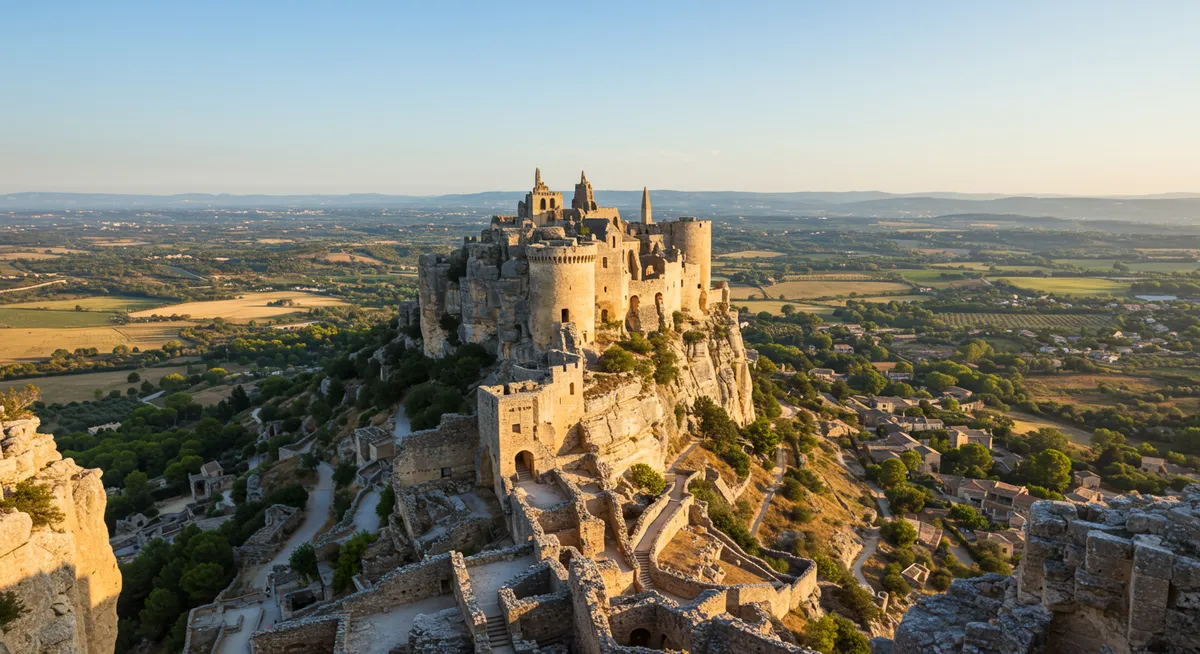
7. Minerve: Cathar Stronghold
Deep in the Languedoc region, Minerve stands as a testament to resilience and tragic history. Perched on a naturally defensive peninsula surrounded by deep limestone gorges, this ancient village was the site of a devastating siege during the Albigensian Crusade against the Cathar heretics. Today, the peaceful stone village offers visitors breathtaking natural beauty, profound historical significance, and an authentic glimpse into rural French life away from mainstream tourism routes.
What Makes It Special
- Natural Fortification: Set on a rocky peninsula surrounded by deep gorges carved by two rivers
- Cathar History: Site of a famous siege in 1210 that ended with the burning of 140 Cathar "perfecti"
- Geological Wonders: Natural bridges, caves, and dramatic gorges surrounding the village
- Minervois Wine: Center of the excellent Minervois wine appellation
Local Experiences
Visit the small museum dedicated to Cathar history and the tragic siege that made Minerve a symbol of religious persecution. Walk the perimeter of the village for spectacular views of the gorges and natural bridges formed by the rivers below. Sample Minervois wines at the local cooperative or in village restaurants, paired with regional specialties. Explore the nearby olive groves and vineyards on hiking trails that offer beautiful vistas of the medieval village.
Getting There
Minerve is located in the Languedoc region, about 40 km (25 miles) northwest of Narbonne. It's accessible only by car, with the final approach offering stunning views as the village comes into sight. The village is very small and entirely pedestrianized, with parking available before entering the village.

8. Saorge: Alpine Italian Influence
Clinging to a steep mountainside in the Roya Valley near the Italian border, Saorge presents one of the most dramatically situated villages in all of France. Its terraced stone houses with colorful facades cascade down the slope, creating a vertical labyrinth of narrow passages, arched alleyways, and cascading staircases. With strong Italian influences in its architecture and cuisine, this village offers a unique Alpine Mediterranean character distinctly different from typical Provençal settlements.
What Makes It Special
- Vertical Architecture: Buildings stacked dramatically on a steep mountainside with interconnected passageways
- Italian-French Fusion: Cultural and architectural influences from both countries
- Franciscan Monastery: A beautifully preserved 17th-century monastery with baroque church and gardens
- Alpine Setting: Surrounded by the dramatic peaks of the Mercantour National Park
Local Experiences
Explore the former Franciscan monastery, now a cultural center and artists' residence with a magnificent baroque church and terraced gardens. Hike the surrounding mountains for panoramic views of the village clinging to the mountainside. Sample local cuisine featuring mountain herbs, chestnuts, and Italian-influenced dishes distinct from typical Provençal fare. Visit during the annual Music Festival (July) when concerts are held in the monastery's exceptional acoustic spaces.
Getting There
Saorge is located in the Maritime Alps, about 70 km (43 miles) northeast of Nice. It can be reached by car via mountain roads, or by train to the nearby Saorge-Fontan station on the Nice-Cuneo line. The village is pedestrian-only, with parking at the village entrance.
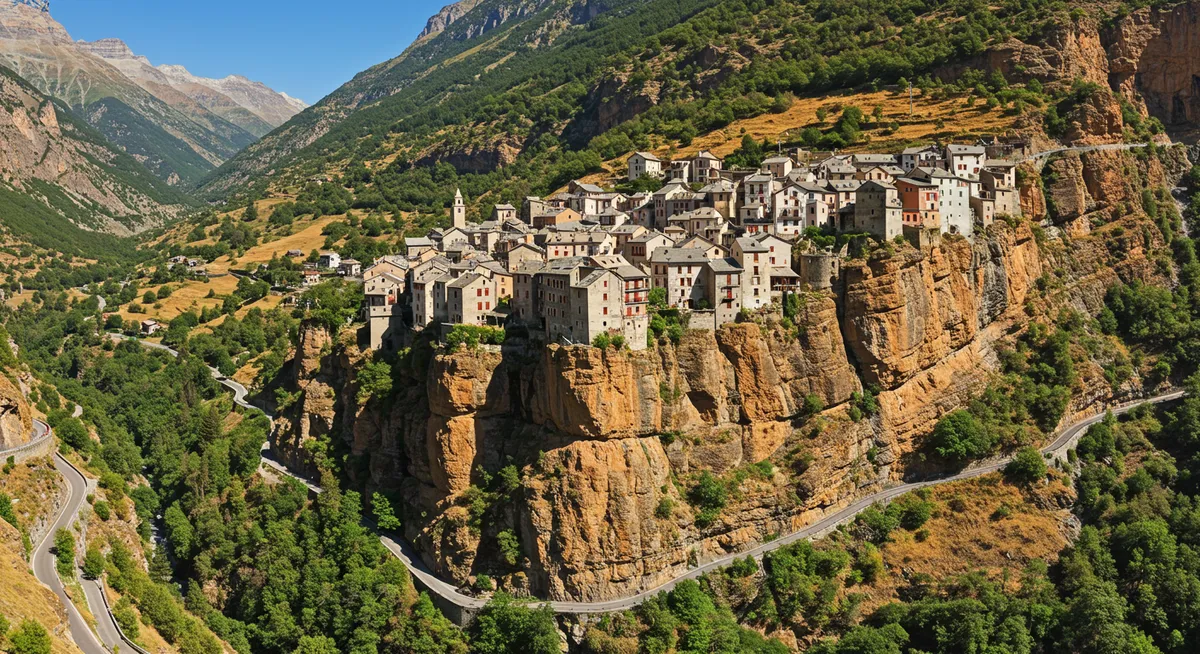
Travel Tips for Visiting Southern France's Hidden Villages
To make the most of your experience exploring these underrated treasures, keep these practical tips in mind:
Best Time to Visit
Late April to June and September to mid-October offer ideal conditions—pleasant weather, fewer crowds, and beautiful landscapes. The famous lavender blooms in late June through July, particularly around villages like Gordes and Roussillon. Many villages host summer festivals, but August brings intense heat and crowds as French nationals take their annual vacation. Winter visits offer a truly local experience, though some attractions and restaurants may have limited hours.
Transportation
A car provides the most flexibility for exploring these off-the-beaten-path locations, allowing you to discover viewpoints and nearby natural attractions. Many historic village centers are pedestrianized, so be prepared to park at the edge of town and walk in. The SNCF train network can access larger towns near some villages, but local connections may be limited. Consider renting a smaller car, as village streets and parking spaces can be very narrow.
Accommodations
For an authentic experience, stay in a chambre d'hôte (French B&B) or small hotel within the villages themselves. Many historic buildings have been beautifully converted to charming accommodations. Book well in advance for the high season (June-September), especially for weekend stays. Consider staying in a rural gîte (holiday home) between villages if you prefer more space and self-catering options.
Language
While tourist areas in Southern France often have English-speaking staff, in these authentic villages, a few French phrases will enhance your experience significantly. Basic greetings, please/thank you, and numbers for shopping are especially useful. Menus may not be translated in these off-the-beaten-path locations, so a food translation app can be helpful.
Pro Tip: Many of these villages have weekly markets on specific days where you can find local produce, crafts, and specialties. Research market days in advance to include this authentic experience in your itinerary.
Planning Your Southern France Hidden Village Itinerary
For the ultimate experience of Southern France's hidden gems, consider planning an itinerary that combines several villages in proximity:
Provence Interior Circuit (4-5 days)
Begin in Gordes, exploring its magnificent stone architecture and nearby Sénanque Abbey. Continue to Roussillon to marvel at the ochre landscapes. Make your way to Les Baux-de-Provence to explore its dramatic castle ruins and the extraordinary Carrières de Lumières. This circuit offers the quintessential Provençal experience with lavender fields (in season), vineyards, and olive groves connecting these picturesque villages.
French Riviera Alternative (3-4 days)
Instead of crowded coastal resorts, experience the Côte d'Azur's authentic side by starting at Eze village for dramatic Mediterranean views. Then venture inland to Saorge for a completely different alpine-influenced atmosphere. This circuit shows two dramatically different faces of the region—the Mediterranean coastal influence and the rugged Alpine character of the hinterland villages.
Western Hidden Gems Circuit (3-4 days)
Explore the less-visited western treasures of Southern France by starting at Collonges-la-Rouge to admire its unique red architecture. Then journey south to Minerve to discover its Cathar history and dramatic gorges. This route takes you through some of France's most beautiful countryside and provides insights into the rich historical tapestry of the region.
Travel Tip: For any of these circuits, consider basing yourself in a centrally located small city with good train connections (like Avignon or Aix-en-Provence for the Provence circuit) and taking day trips, or rent a car for maximum flexibility in reaching these hidden gems.
Related Hidden Gem Towns Around Europe
If you enjoy discovering Southern France's hidden villages, you might also appreciate these similar destinations in neighboring countries:

7 Underrated Medieval Villages in Italy
Discover Italian villages like Civita di Bagnoregio that share many architectural elements with their French counterparts.
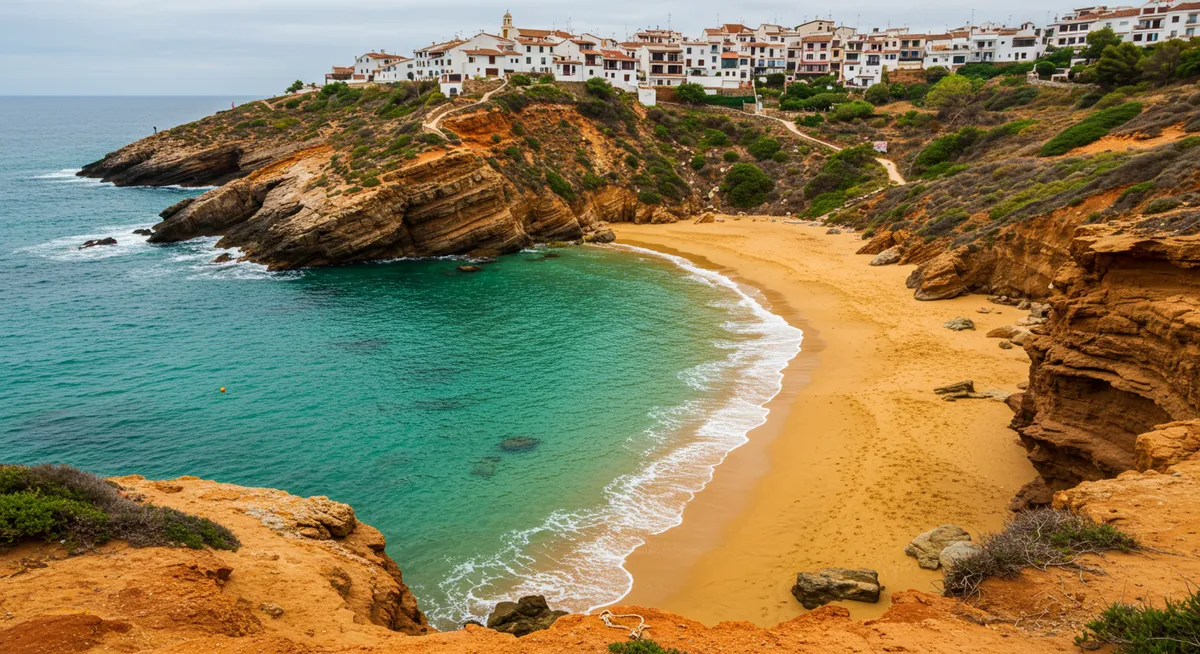
Coastal Spanish Villages Off the Tourist Trail
Experience the Mediterranean charm of Spain's hidden coastal villages, a perfect complement to France's inland treasures.

Hidden Alpine Villages in the Swiss Mountains
If you enjoyed Saorge's Alpine influence, you'll love these authentic mountain villages in neighboring Switzerland.
Explore More Hidden Gem Towns
Discover more enchanting under-the-radar destinations across Europe and beyond.